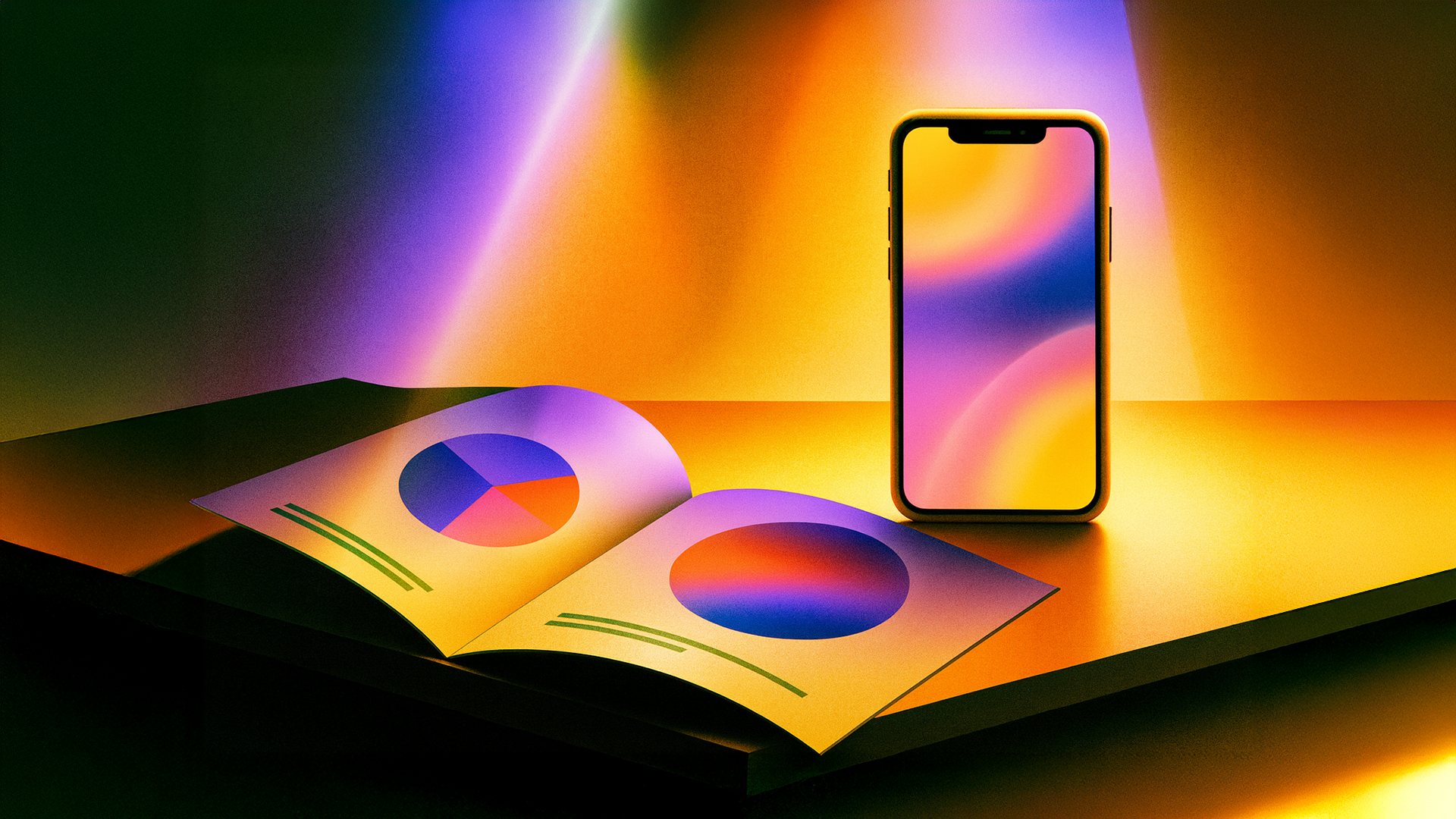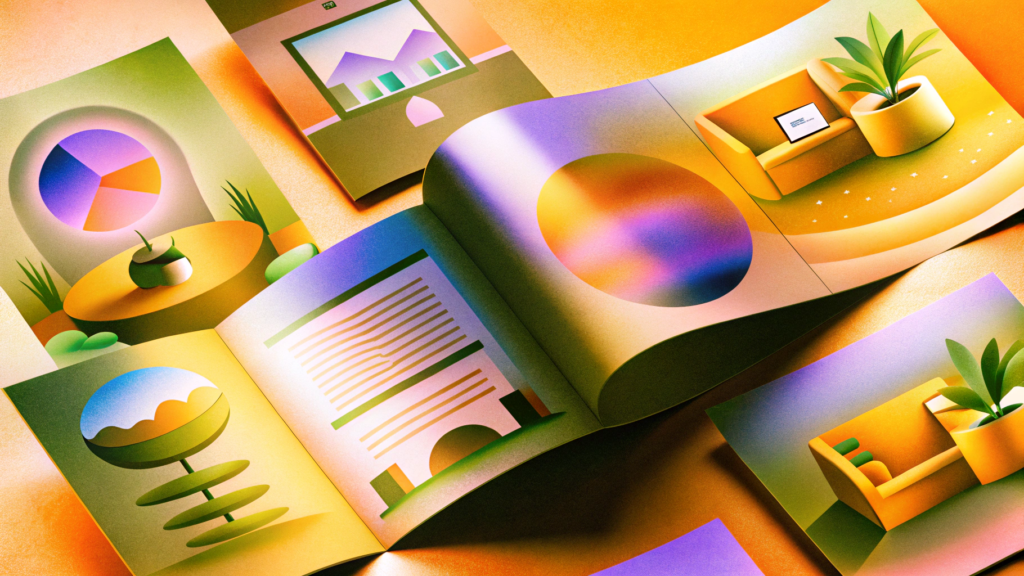
Professional Brochure Design and Its Relevance in the Age of Screens
Sep 22, 2025
When you hear the word brochure, what pops into your head? A small, folded booklet you grabbed at an exhibition, only to lose under a bed or tuck away in a bag and forget? That’s not the brochure’s fault. It’s lazy design that turns an opportunity into clutter.
Now picture a different kind of brochure: compact, beautifully crafted, almost like a piece of origami you keep because it’s gorgeous. The layout is clever, the images say more than a paragraph ever could, and a discreet QR code opens the exact page or video you’ve been hunting for. Even if you’ve never heard of the product, you hold on to it.
That’s the power of a professional brochure design.
Before the digital boom, brochures served as a fundamental tool in B2B communication. Today, they raise a new question— have they become obsolete, or have they merely evolved? Let’s examine how contemporary brochure design remains relevant and continues to engage audiences in a screen-saturated world.

What is a brochure?
A brochure is a compact printed marketing tool designed to inform, persuade, and guide potential customers toward action. Typically folded into bi-fold or tri-fold formats, brochures allow businesses to present concise yet impactful information such as product details, service benefits, or brand messaging in a tangible form that readers can carry, skim, and revisit.
It’s worth clarifying here that brochures are not the same as leaflets. A leaflet is usually a single sheet, flat and straightforward, often used for mass distribution. A brochure, in contrast, is multi-fold, structured, and designed for more detailed storytelling. If a leaflet is a quick introduction, a brochure is the more polished conversation starter.

The journey of brochure through history
The word brochure comes from the French “brocher,” meaning “to stitch.” Its earliest recorded English usage dates back to 1765, when stitched pamphlets were distributed for political and social debates.
But if we go further back, some historians suggest the earliest “brochure-like” marketing can be traced to 16th-century Spain. Hernán Cortés is said to have produced a broadside promoting turkey meat, arguably one of the first known cases of print advertising.
Fast forward to the American Revolution, where Thomas Paine’s pamphlet Common Sense (1776) rallied colonists toward independence. Though not a brochure in today’s sense, it demonstrates the persuasive power of print media.
From the 1940s onward, brochures became mainstream marketing tools. Early designs were hand-drawn, limited by cost and printing technology. By the 1950s and 60s, photography reshaped brochures with realism, while the 70s brought bold, colorful layouts. The 1980s desktop publishing revolution forever changed the landscape. Suddenly, any business could design professional brochures without relying on expensive, manual typesetting.

Why brochures still add value in 2025: Relevance Through Reinvention
With the rise of websites, apps, and social media, many predicted the decline of brochures. Why print a folded piece of paper when you can publish a web page or send an email campaign?
And yet, brochures have not disappeared. Instead, they’ve evolved. Modern brochure design no longer competes with digital media. It complements it, becoming an interactive gateway that bridges the physical and digital worlds.
The effectiveness of brochures may surprise.
- High recall value: Flyers and brochures are remembered by 89% of people, outperforming many digital ads. About 79% keep them for future reference (source: Bentley University research on print media).
- Tourism impact: According to the Center for Marketing Technology at Bentley University, 95% of visitors become aware of a business through brochures, and 80% consider visiting after picking one up.
- Educational benefits: Healthcare research has found brochures improve understanding. Those who received an educational brochure answered key survey questions more accurately than those who didn’t.
- Tangible trust: A U.S. Postal Service study showed that print materials are viewed as more trustworthy than digital ads, as they feel “real” in a way pixels do not.
These numbers highlight a critical point: brochures still hold a unique persuasive power. Unlike digital ads that disappear in seconds, brochures linger on coffee tables, in travel bags, and on office desks, reminding readers of your brand.

How brochure design has evolved in the digital era
Modern brochure design borrows the best of both worlds: the tactile impact of print and the interactivity of digital tools. Here’s how:
- Data-Driven Personalization: Instead of one-size-fits-all, businesses now tailor brochures based on customer segmentation. For example, a real estate developer may design separate brochures for luxury buyers, first-time homeowners, and corporate investors.
- Interactive Elements: QR codes, scannable promo codes, and even NFC chips turn brochures into clickable experiences. A tourism brochure, for instance, can link to a virtual tour of a destination.
- Minimalist Design: Today’s brochures often adopt clean typography, bold visuals, and whitespace to guide attention, inspired by digital UX design principles.
- Prioritize Visual Hierarchy: Use bullet points, infographics, and bold visuals to guide attention. Photos of real products or locations outperform stocky, generic imagery.
- Design for Longevity: Unlike a one-off social media post, a brochure should be designed to live on, whether in a hotel rack, a trade fair booth, or a client’s office drawer.

The Psychology Behind Brochure Effectiveness
Why do brochures work effectively even now when our world is dominated by the digital boom? The answer lies in psychology. Neuroscientific studies show that people engage more deeply with printed materials because touching them activates memory and emotional centers in the brain. A glossy, high-quality brochure signals investment, professionalism, and trustworthiness. It feels less disposable than a pop-up ad.
Moreover, the limited space across pages reinforce clarity. With only 350–450 words fitting into a tri-fold, businesses must present crisp, prioritized messages, making brochures easier to digest and remember.

So, coming back to the same question, is the professional brochure outdated today?
Absolutely not. It has simply evolved and adapted with a focussed narrative..
From its stitched-paper origins to AR-enabled, eco-friendly versions today, professional brochure design has remained a resilient marketing medium. Even digital brochures are now available, allowing people to download and read them at their convenience.
A brochure is still one of the most formal tools to define a company. Whether handed out at trade fairs, shared during conferences, or placed on a client’s desk, it sets the tone before the first round of meetings. It introduces your brand, communicates your values, and gives prospects something concrete to hold on to in a world full of fleeting digital impressions.
In a world where every brand is competing for attention, your brochure should work as your opening pitch. We create brochures that don’t just sit on desks—they get noticed, remembered, and taken seriously. Let your brochure do the talking before you walk into the room. Let’s make it happen together.
Next Story

Branding vs Marketing: What Branding Agencies Actually Do
Sep 24, 2025
When you hear the word brochure, what pops into your head? A small, folded booklet you grabbed at an exhibition, only to lose under a bed or tuck away in…
Read More





